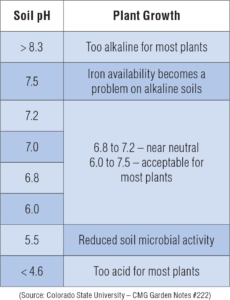Precision farming, hydroponics, vertical farming, and genetic modification are examples of modern agriculture techniques. These agricultural techniques have several benefits over conventional farming. Precision farming is the application of IoT, data analytics, and GPS technologies to maximize fieldRead more
Precision farming, hydroponics, vertical farming, and genetic modification are examples of modern agriculture techniques. These agricultural techniques have several benefits over conventional farming.
Precision farming is the application of IoT, data analytics, and GPS technologies to maximize field-level crop farming management. By giving accurate information on crop health, moisture content, and soil conditions, it increases efficiency while lowering input costs and having a less negative impact on the environment.
Hydroponics: An approach to soilless gardening in which plants are grown in nutrient-rich water solutions. Increased crop yields, quicker growth rates, and less water use are all made possible by it. Arable land is not as necessary when using this strategy in metropolitan areas.
Crops are grown vertically, sometimes in regulated interior spaces, in stacked layers. It minimizes reliance on weather conditions, increases the use of available space, uses less water, and allows for year-round production.
Genetic modification is the process of changing a crop’s genetic composition to increase desired characteristics including drought tolerance, insect resistance, and increased nutritional value. It may result in higher output and a decrease in the requirement for chemical fertilizers and pesticides.
These contemporary methods have several benefits, including as increased yields, resource efficiency, less environmental impact, and the capacity to grow crops in unconventional settings, which helps to better address the problems associated with food security.
See less

Sustainable farming practices are crucial for conserving soil health and preventing land degradation. These practices maintain the productivity and ecological balance of the soil, ensuring long-term agricultural viability and environmental health. One key practice is crop rotation, where different cRead more
Sustainable farming practices are crucial for conserving soil health and preventing land degradation. These practices maintain the productivity and ecological balance of the soil, ensuring long-term agricultural viability and environmental health.
One key practice is crop rotation, where different crops are planted sequentially on the same land. This reduces pest and disease cycles and enhances soil fertility by varying nutrient demands. For instance, rotating legumes with cereals can fix nitrogen in the soil, enriching it naturally.
Cover cropping is another effective technique. Planting cover crops, such as clover or rye, during off-seasons prevents soil erosion, improves soil structure, and increases organic matter content. These crops also suppress weeds and enhance water retention, contributing to overall soil health.
Conservation tillage, which involves minimal soil disturbance, helps maintain soil structure and organic matter. This practice reduces erosion and runoff, preserving the topsoil and its nutrients. No-till farming, a type of conservation tillage, has been successfully implemented in regions like the American Midwest, resulting in improved soil health and reduced labor costs.
Agroforestry, integrating trees and shrubs into farmland, provides shade, reduces wind erosion, and enhances biodiversity. In Costa Rica, shade-grown coffee farms have seen improved soil health and increased crop resilience.
These sustainable farming practices not only conserve soil health but also promote a more resilient and productive agricultural ecosystem, demonstrating their importance in preventing land degradation.
See less